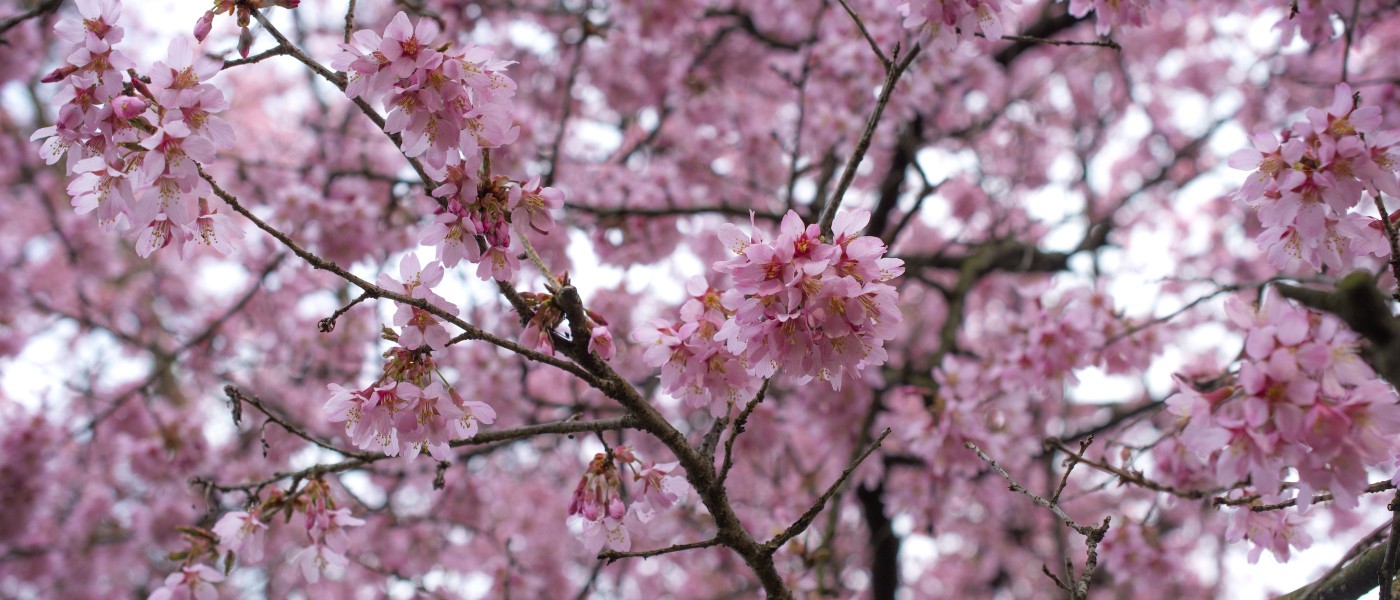Cherry Trees Are Often Grafted. What Does that Mean?
Did you know that some cherry trees are actually—kind of—two cherry trees?
Some flowering cherry trees at Brooklyn Botanic Garden were propagated using a technique called “grafting.” If you’re new to horticulture, that means each tree is actually made up of two genetically different plants that have, well, merged.
Plants: They’re not like us. Here’s how Patrick Austin, plant propagator and nursery gardener at BBG, explains this advanced technique:
“Grafting is essentially taking the stem of one plant—called the ‘scion’—and attaching it to the roots of another—the ‘rootstock’—and having them grow as a single plant,” says Austin.
Ornamental cherry trees are often propagated in nurseries using this method, along with apple trees, other fruit trees, wine grapes, hybrid roses, and many tree peony cultivars.
Horticulturists often do this to combine the desirable features of two plants. For example, a scion from a cherry cultivar with beautiful blossoms might be grafted onto the rootstock of another variety known for its hardy, disease-resistant roots.
Grafting, like growing plants from cuttings, also allows growers to produce genetically identical plants. It’s often used to propagate plants that won’t grow “true” from seed. An apple seedling, for example, will be quite different (and potentially less edible) than its parent tree.

Part of what makes grafting so tricky, says Austin, is that you have to perfectly line up the cambium—that layer of cells underneath the bark where growth occurs—of both plant parts.
This usually requires a very sharp knife, among other tools. But grafting happens in nature sometimes, too, when branches, stems, or roots of two individuals or species make sustained contact in just the right way.
Natural grafting, or “inosculation,” is poorly understood, but researchers believe it may happen when pressure from growth or external forces pushes these plant parts together and the bark wears away, exposing the cambia and allowing the vascular tissues to fuse.
The fused plants can transfer resources like water, hormones, and nutrients. Interestingly, natural grafting has been cited to help explain why some tree stumps in forest ecosystems can survive without leaves.
If you’re visiting Brooklyn Botanic Garden this cherry season, take a closer look at the sargent cherry (Prunus sargentii ‘Columnaris’) near Lily Pool Terrace and the fruit trees in the Herb Garden. (As always, please don’t touch.)
Can you guess the spot where two plants became one?


